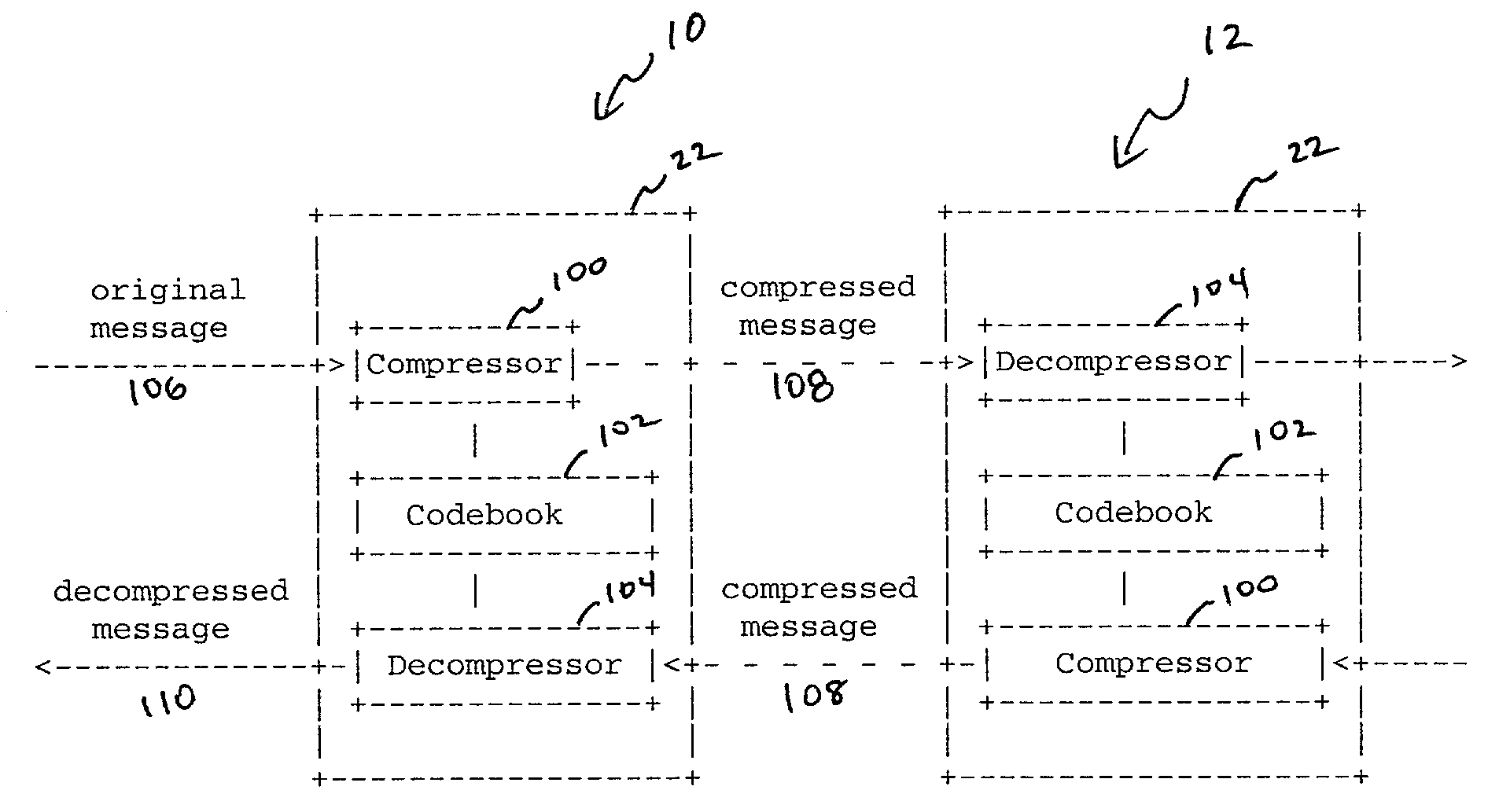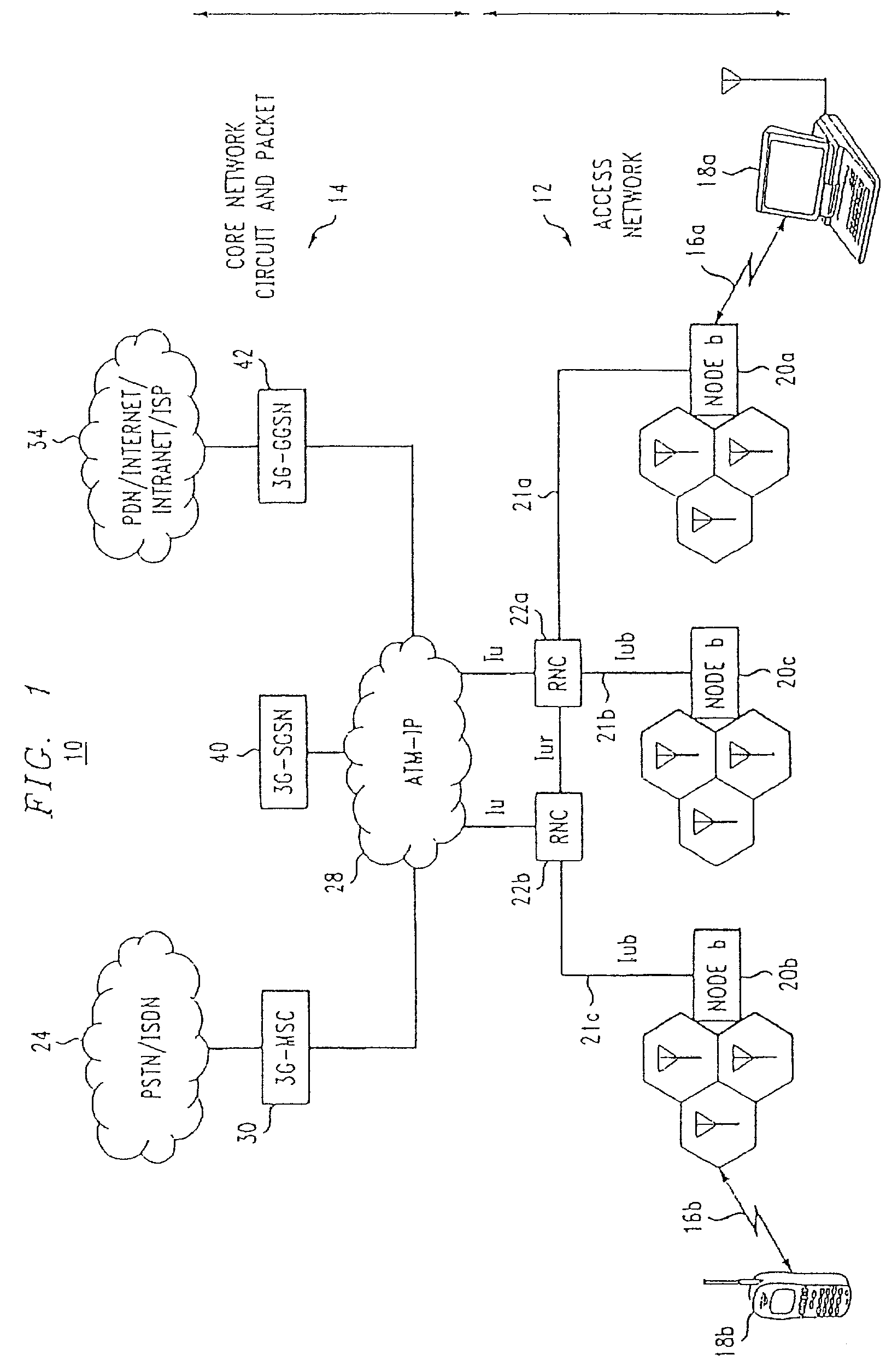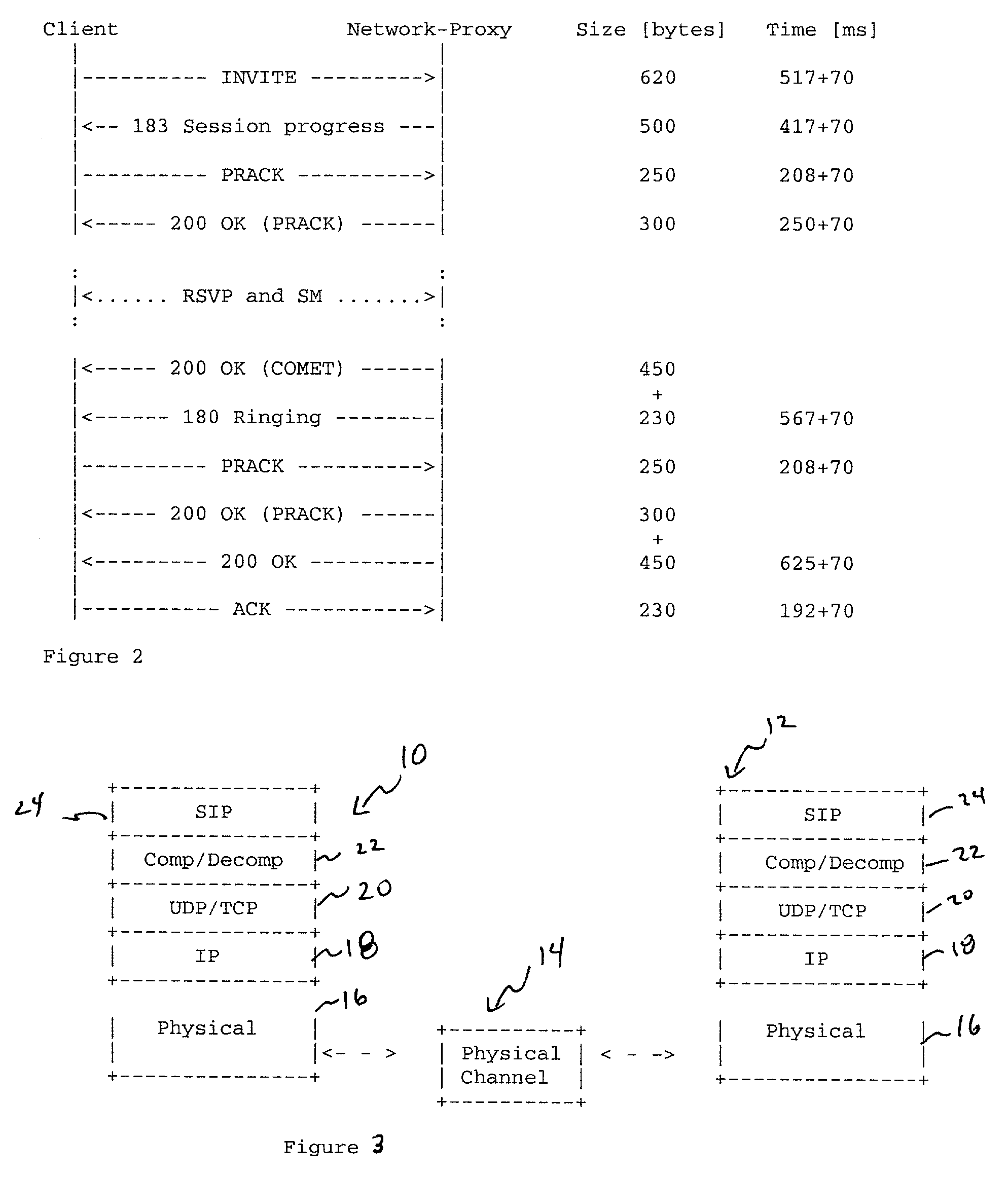Protocol message compression in a wireless communications system
a wireless communication system and protocol message technology, applied in the field of communication, can solve the problems of large protocol message size, large overhead of the ip protocol suite, poor quality of some services, etc., and achieve the effect of reducing signaling delay and required bandwidth
- Summary
- Abstract
- Description
- Claims
- Application Information
AI Technical Summary
Benefits of technology
Problems solved by technology
Method used
Image
Examples
example 1
Message Details
F1 INVITE User A→User B
[0087]INVITE sip:UserB@there.com SIP / 2.0[0088]Via: SIP / 2.0 / UDP here.com:5060[0089]From: BigGuy[0090]To: LittleGuy[0091]Call-ID: 12345601@here.com[0092]CSeq: 1 INVITE[0093]Contact: [0094]Content-Type: application / sdp[0095]Content-Length: 147[0096]v=0[0097]o=UserA 2890844526 2890844526 IN IP4 here.com[0098]s=Session SDP[0099]c=IN IP4 100.101.102.103[0100]t=0 0[0101]m=audio 49172 RTP / AVP 0[0102]a=rtpmap:0 PCMU / 8000
[0103]Applying step 1, the message is parsed with a matching template and the substrings that need to be transmitted are generated. In Example 1, The result of step 1 is as follows:[0104]Template ID: TID[0105]UserB@there.com[0106]here.com:5060[0107]BigGuy UserA@here.com[0108]LittleGuy UserB@there.com[0109]12345601 (“@here.com” is assumed to be the same as above)[0110]1 INVITE[0111](“sip:UserA@” is assumed to be the same as above)[0112](“application / sdp” assumed to be the same)[0113]147[0114]2890844526 (“UserA”“IN IP4 here.com” taken from ...
example 2
Message Details
F2 (100 Trying) User B→User A
[0147]SIP / 2.0 100 Trying[0148]Via: SIP / 2.0 / UDP here.com:5060[0149]From: BigGuy[0150]To: LittleGuy[0151]Call-ID: 12345601@here.com[0152]CSeq: 1 INVITE[0153]Content-Length: 0
[0154]After decoding message F1 from Example 1, User B has populated the codebook with the content of the INVITE message.
[0155]Applying step 1 to Example 2, the following substrings are generated:[0156]TID[0157]here.com[0158]BigGuy UserA@here.com[0159]LittleGuy UserB@there.com[0160]12345601[0161]1 INVITE[0162]0
[0163]Applying step 2 to Example 2, the substrings are parsed with a session specific codebook, as shown in Table 3.
[0164]
TABLE 3Original StringsCompressionTIDno matchhere.com2 bytesBigGuy UserA@here.com2 bytesLittleGuy UserB@there.com2 bytes123456012 bytes1 INVITEno match0no match
[0165]A subtotal of 8 bytes are obtained.
[0166]Assuming that the algorithm is in a full contact mode, where the compressor and decompressor share the codebook 102, after UserA transmits t...
example 3
Message Details
F3 180 Ringing User B→User A
[0174]SIP / 2.0 180 Ringing[0175]Via: SIP / 2.0 / UDP here.com:5060[0176]From: BigGuy[0177]To: LittleGuy[0178]Call-ID: 12345601@here.com[0179]CSeq: 1 INVITE[0180]Content-Length: 0
[0181]Apply the same procedure as above for Example 2, the resulting message is 12 bytes, and the compression ratio is 187 / 12=15.6.
PUM
 Login to View More
Login to View More Abstract
Description
Claims
Application Information
 Login to View More
Login to View More - R&D
- Intellectual Property
- Life Sciences
- Materials
- Tech Scout
- Unparalleled Data Quality
- Higher Quality Content
- 60% Fewer Hallucinations
Browse by: Latest US Patents, China's latest patents, Technical Efficacy Thesaurus, Application Domain, Technology Topic, Popular Technical Reports.
© 2025 PatSnap. All rights reserved.Legal|Privacy policy|Modern Slavery Act Transparency Statement|Sitemap|About US| Contact US: help@patsnap.com



